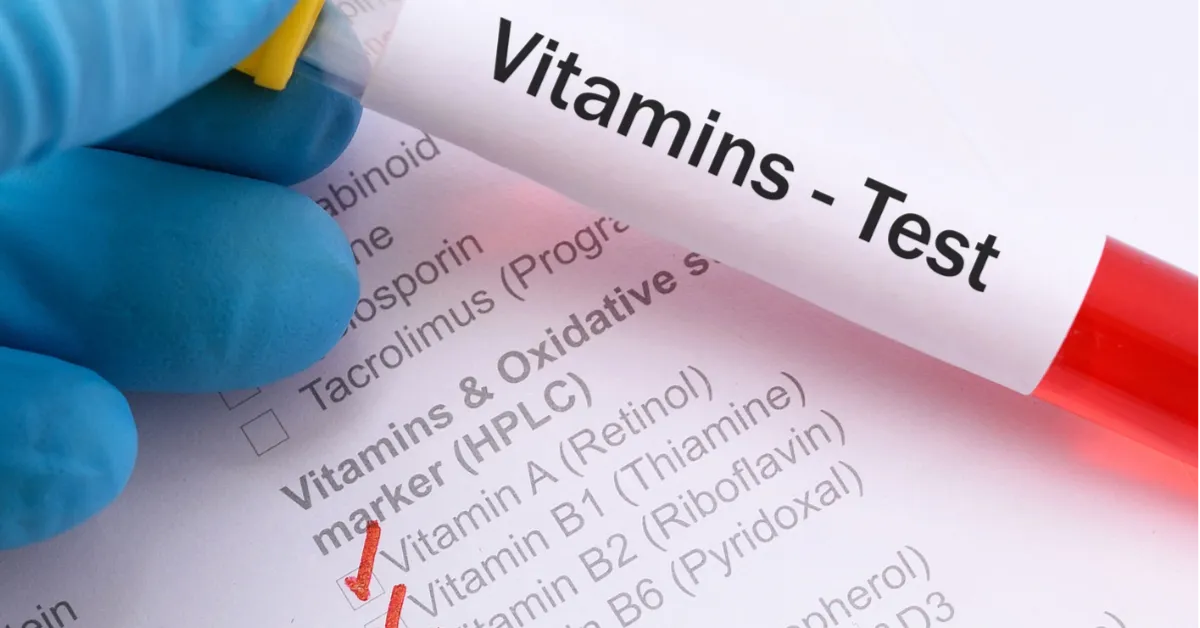AOAC 970.65 Vitamin B2 Analysis in Dairy Products
The analysis of vitamin B2, also known as riboflavin, is critical for ensuring the quality and safety of dairy products such as milk, cheese, yogurt, and butter. The AOAC International method 970.65 provides a standardized approach to quantifying riboflavin content in these products by measuring its absorbance at specific wavelengths using spectrophotometry.
This service is essential for several reasons. First, it ensures compliance with international food safety regulations and standards such as ISO 21749:2015, which specifies the determination of riboflavin in dairy products. Second, accurate quantification of vitamin B2 helps maintain product quality by ensuring consistent levels that meet consumer expectations. Finally, it supports research and development efforts aimed at optimizing production processes to enhance nutritional value.
The AOAC 970.65 method is widely recognized for its reliability and precision in measuring riboflavin concentrations. It involves several key steps: sample preparation, calibration curve generation, spectral scanning, and calculation of the final concentration based on absorbance readings. Samples are typically prepared by diluting them appropriately to fall within the linear range of the calibration curve.
The instrumentation used for this analysis includes a spectrophotometer equipped with appropriate cuvettes and filters set at 450 nm, where riboflavin absorbs light most strongly. Calibration is done using standard solutions containing known concentrations of riboflavin. The absorbance values obtained from the unknown samples are then compared against these standards to determine their respective amounts.
Accuracy and precision are paramount in this type of analysis. Reproducibility between different laboratories conducting the same test should not exceed ±0.5% relative standard deviation (RSD). Precision within a single laboratory setting must also be controlled, with intra-assay RSDs ideally less than 1%. This ensures that results can be consistently reproduced across various testing environments and times.
Quality control measures play an integral role in maintaining the integrity of these analyses. Regular calibration checks and participation in proficiency testing programs provided by organizations like the International Dairy Federation (IDF) help ensure compliance with international standards and maintain high-quality analytical practices.
The importance of accurate vitamin B2 analysis extends beyond just meeting regulatory requirements; it has significant implications for public health. Riboflavin is essential for proper metabolism, skin health, and vision protection. Ensuring adequate levels in dairy products supports overall well-being among consumers who depend on these foods as part of their daily diet.
In summary, the AOAC 970.65 method is a cornerstone technique used globally to measure riboflavin content in dairy products accurately and reliably. Its implementation not only ensures regulatory compliance but also contributes positively towards maintaining product quality and supporting public health initiatives.
Why It Matters
The analysis of vitamin B2 is crucial for several reasons within the context of dairy products:
- Regulatory Compliance: Ensures adherence to international standards such as ISO 21749:2015, which specifies how riboflavin should be determined in dairy products.
- Product Quality: Consistent vitamin B2 levels contribute significantly to the overall quality of dairy products, meeting consumer expectations and preferences.
- Nutritional Value: Maintaining optimal riboflavin content supports public health by ensuring that consumers receive adequate nutrients from their diet.
- Research and Development: Provides valuable data for optimizing production processes to enhance nutritional value and improve product offerings.
By adhering to the AOAC 970.65 method, laboratories can provide accurate and reliable measurements that are essential for maintaining high standards of food safety and quality.
Customer Impact and Satisfaction
The impact of accurate vitamin B2 analysis on customers cannot be overstated. For quality managers and compliance officers, having precise data about riboflavin content allows them to make informed decisions regarding product formulations and labeling practices. This information is vital for ensuring that all products meet or exceed specified nutritional guidelines set forth by regulatory bodies.
R&D engineers benefit greatly from this service as well because it enables them to fine-tune production methods to maximize the retention of riboflavin during processing stages. Such improvements can lead to enhanced product performance and extended shelf life, ultimately benefiting both producers and consumers alike.
For procurement teams involved in sourcing raw materials for dairy products, knowing exactly how much vitamin B2 is present helps them select suppliers who consistently deliver quality ingredients. This ensures that the final product remains consistent in terms of its nutritional composition.
In addition to these direct benefits, accurate analysis fosters greater customer satisfaction by delivering products that align perfectly with advertised claims regarding their health and nutritional attributes. When consumers trust that what they are purchasing lives up to its promises, loyalty increases, leading to long-term business relationships between suppliers and customers.
Use Cases and Application Examples
- Dairy Product Quality Control: Regularly monitoring riboflavin levels ensures that each batch of dairy product meets the required standards for both flavor and nutritional content.
- New Product Development: Analyzing vitamin B2 during the development phase allows innovators to design products that not only taste good but also offer beneficial health properties.
- Supply Chain Optimization: By understanding riboflavin levels throughout the supply chain, companies can better manage inventory and reduce waste by adjusting production schedules accordingly.
- Labeling Accuracy: Accurate analysis supports truthful labeling practices which build consumer trust and comply with food labeling laws globally.
The ability to measure vitamin B2 precisely is therefore indispensable for any company involved in the dairy industry. It provides insights into product quality, helps drive innovation, optimizes supply chains, and ensures compliance with legal requirements while enhancing consumer trust.





